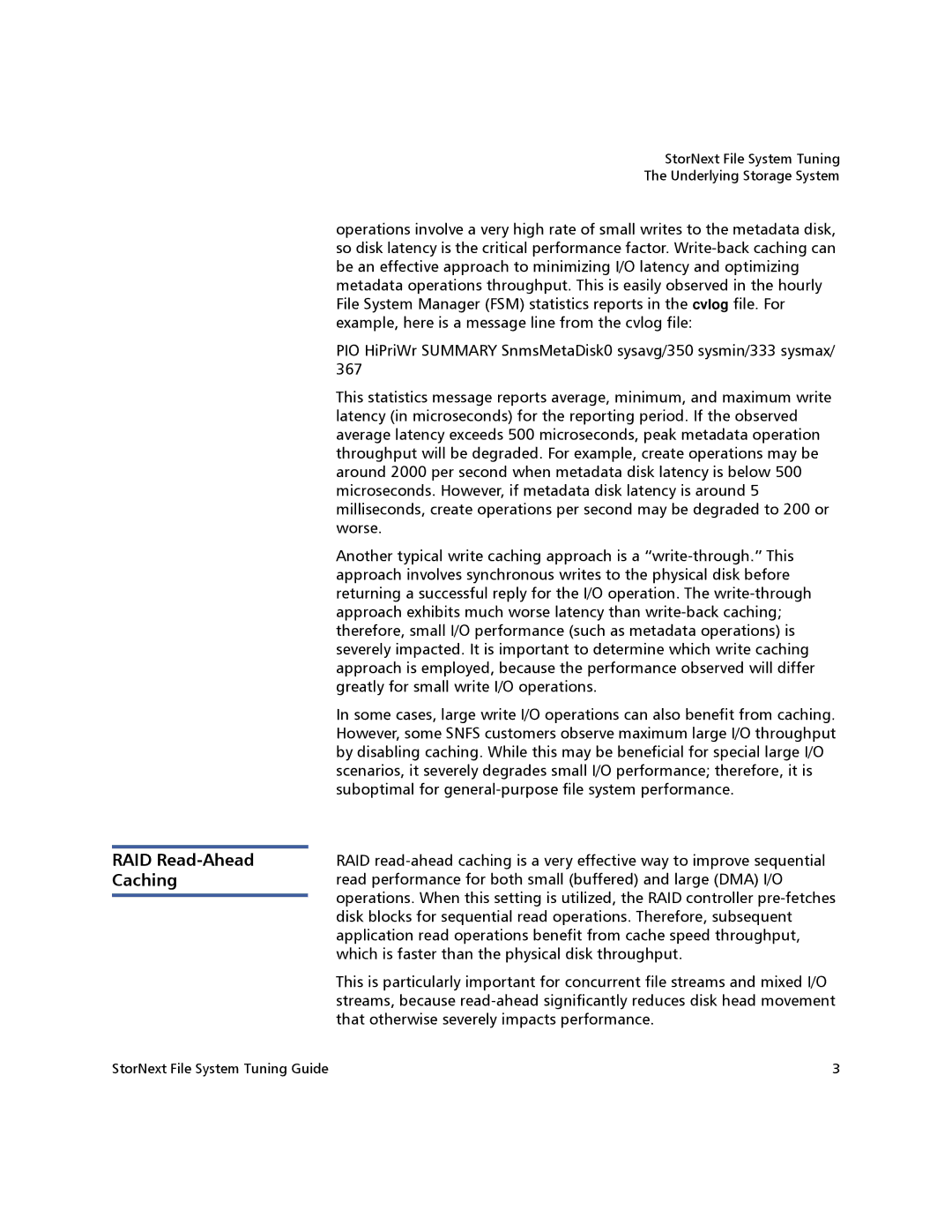StorNext File System Tuning
The Underlying Storage System
| operations involve a very high rate of small writes to the metadata disk, |
| so disk latency is the critical performance factor. |
| be an effective approach to minimizing I/O latency and optimizing |
| metadata operations throughput. This is easily observed in the hourly |
| File System Manager (FSM) statistics reports in the cvlog file. For |
| example, here is a message line from the cvlog file: |
| PIO HiPriWr SUMMARY SnmsMetaDisk0 sysavg/350 sysmin/333 sysmax/ |
| 367 |
| This statistics message reports average, minimum, and maximum write |
| latency (in microseconds) for the reporting period. If the observed |
| average latency exceeds 500 microseconds, peak metadata operation |
| throughput will be degraded. For example, create operations may be |
| around 2000 per second when metadata disk latency is below 500 |
| microseconds. However, if metadata disk latency is around 5 |
| milliseconds, create operations per second may be degraded to 200 or |
| worse. |
| Another typical write caching approach is a |
| approach involves synchronous writes to the physical disk before |
| returning a successful reply for the I/O operation. The |
| approach exhibits much worse latency than |
| therefore, small I/O performance (such as metadata operations) is |
| severely impacted. It is important to determine which write caching |
| approach is employed, because the performance observed will differ |
| greatly for small write I/O operations. |
| In some cases, large write I/O operations can also benefit from caching. |
| However, some SNFS customers observe maximum large I/O throughput |
| by disabling caching. While this may be beneficial for special large I/O |
| scenarios, it severely degrades small I/O performance; therefore, it is |
| suboptimal for |
|
|
RAID | RAID |
Caching | read performance for both small (buffered) and large (DMA) I/O |
| operations. When this setting is utilized, the RAID controller |
| |
| disk blocks for sequential read operations. Therefore, subsequent |
| application read operations benefit from cache speed throughput, |
| which is faster than the physical disk throughput. |
| This is particularly important for concurrent file streams and mixed I/O |
| streams, because |
| that otherwise severely impacts performance. |
StorNext File System Tuning Guide | 3 |
